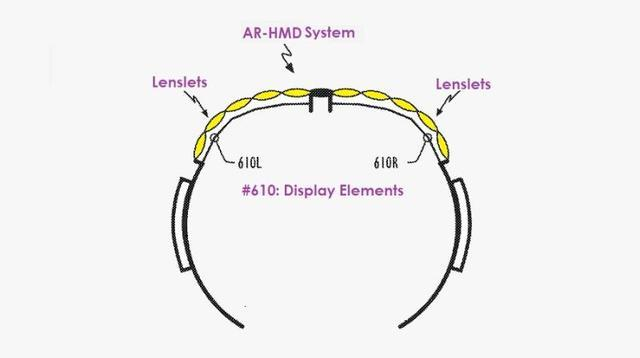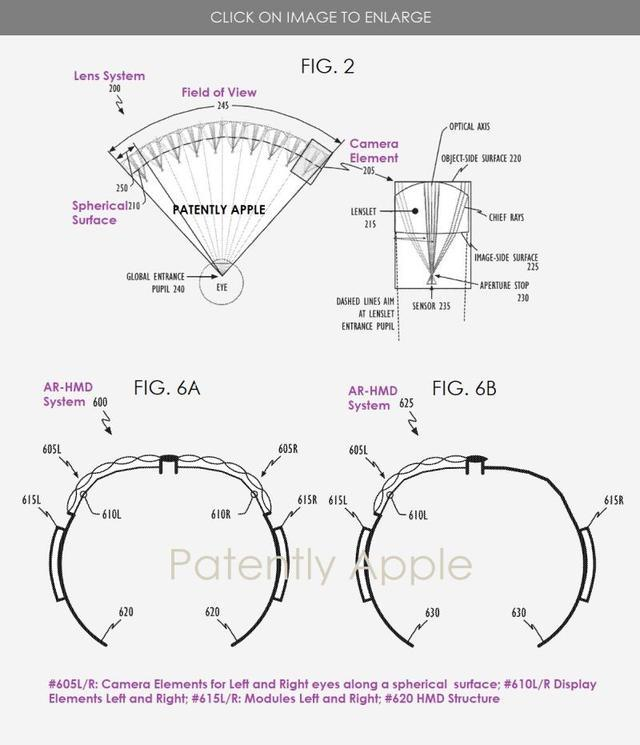
According to patentlyapple, the U.S. patent and Trademark Office has released a new patent from apple, which reveals a unique lens system design that includes a new lens of “lens sets” and is very suitable for AR headset devices, which may subvert the lens system of AR glasses.
Apple patent points out that augmented reality (AR) or hybrid reality (MR) systems can fuse and project virtual images to the real-world view, while in AR head mounted devices (HMDS), virtual content is displayed through the image projection system located near the eyes. The real-world content can be viewed directly with an “optical perspective” lens or digitally rendered based on a scene camera to achieve “video perspective”.
However, in the current video perspective head mounted display, the real-world perspective is offset because the scene camera is installed in front, above and / or side of the user’s eyes.
It is worth mentioning that, compared with the user’s eyes, the scene camera placed on the side of the eyes will lead to pupil distance (IPD) mismatch, so the user may have diplopia, blurred vision, dizziness, headache, nausea, fatigue and other discomfort symptoms. This mismatch may also lead to incorrect perception of objects, and the scene camera placed above or in front of the eyes can also create a perspective, This perspective will be exaggerated into the user’s head movement or incorrect motion parallax, which can cause user discomfort, which is the problem to be solved by Apple’s new patent.
The Apple patent describes a novel lens system whose entry pupil position matches or almost matches the entry pupil position of the human eye optical system.
Apple’s lens system is lighter and thinner than traditional lens systems (realized through a series of camera elements), so it is very suitable for head mounted devices (HMDS).
Each camera element includes camera optics and sensors called “lenslets” (for example, the sensor may be an image sensor or a depth sensor), where lenslets include one or more lenses (for example, a composite lens).
The optical axis of a single camera element can intersect at or near the entrance pupil of the eye. In addition, the field angle (FOV) of each camera element corresponds to a small sector with a large field angle, and the field angles of adjacent camera elements can not overlap or slightly overlap, so that a wide-angle image can be formed by connecting the images of each camera element.

Wherein Fig. 6A shows an augmented reality (AR) HMD system #600 according to one or more examples, including a plurality of camera elements (represented by forming elements) for monocular (e.g., 605l and 605r) arranged along a sphere, one or more display elements (# 610l and # 610r), one or more modules (# 615l and # 615r), and a structure # 620.
Fig. 6b is another example of an ar-hmd system #625, including optical and electronic systems (6051, 6101 and module 615) fixed to a structure (#630) for monocular use only. In the system shown, electronic modules #6151 and #615r are shown, although neither may be necessary.
Finally, although not mentioned in the patent body, the Apple patent states that “computer-readable code for identifying one or more objects in the scene includes computer-readable code for performing face recognition to identify people in the scene.” This may be a major feature of Apple’s future glasses. Fortunately, Apple may disclose more details of this function in the future “lens lets” secondary patent.





